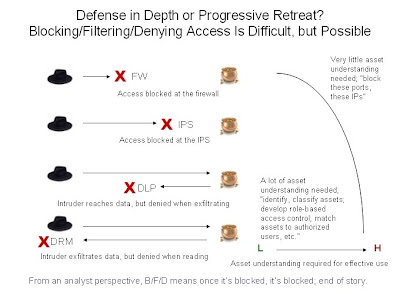Two Dimensional Thinking and APT

I expect many readers will recognize the image at left as representing part of the final space battle in Star Trek II: The Wrath of Khan. During this battle, Kirk and Spock realize Khan's tactics are limited. Khan is treating the battle like it is occuring on the open seas, not in space. Spock says: He is intelligent, but not experienced. His pattern indicates two-dimensional thinking. I though this quote could describe many of the advanced persistent threat critics, particularly those who claim "it's just espionage" or "there's nothing new about this." Consider this one last argument to change your mind. (Ha, like that will happen. For everyone else, this is how I arrive at my conclusions.) I think the problem is APT critics are thinking in one or two dimensions at most, when really this issue has at least five. When you only consider one or two dimensions, of course the problem looks like nothing new. When you take a more complete look, it'













